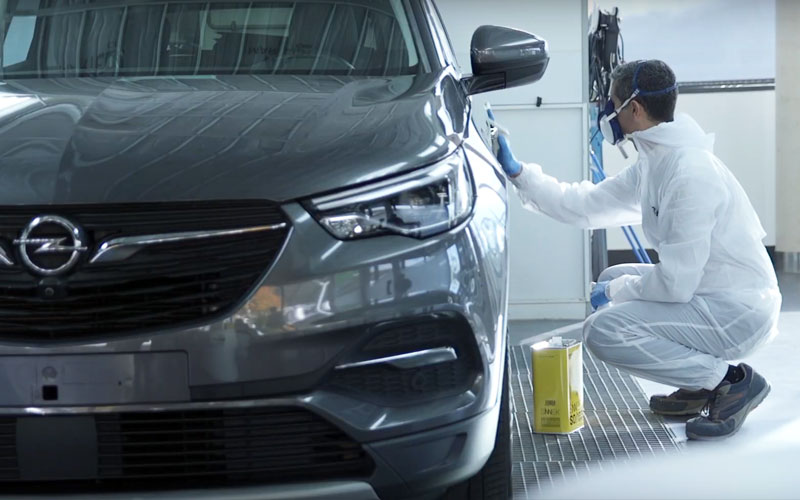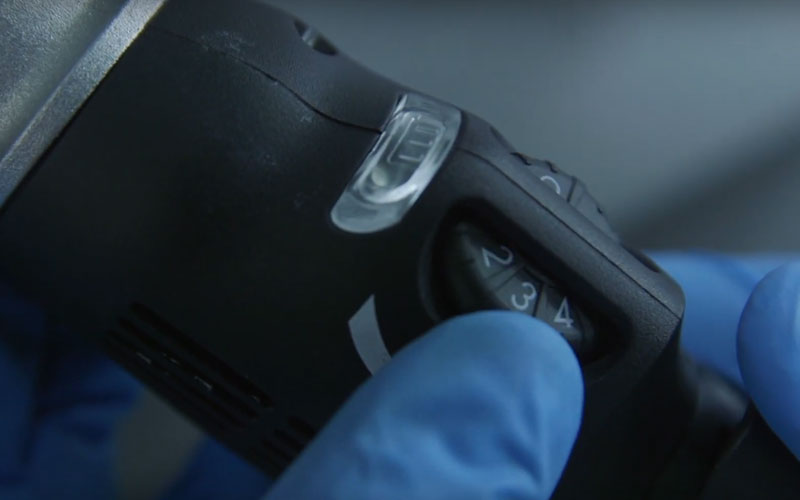
This post is part of a set of contents related to the process of using a spectrophotometer, where we explain in detail the importance of obtaining accurate colour information when repainting the car.
If you want to learn all the steps to consider for the correct use of a spectrophotometer and for taking a colour reading, don’t miss the rest of the related contents:
After having correctly identified the surface to be repaired and the type of application technique to be used, focus now on preparing the surface, which is essential for obtaining the most accurate colour information as possible.
1. Prior cleaning of the surface
First, clean the surface where you will take the spectrophotometer reading with a degreasing cleaner.To do this, you can use both a water-based degreaser and an acrylic degreaser.

Soak a microfibre cloth with the chosen degreaser and clean the area thoroughly. Make sure no dirt remains.
2. Surface polishing for accurate colour reading
The next step is to polish the surface where you are going to take the reading for a much more accurate and interference-free colour.
To do this, always use a polishing machine, instead of polishing manually with a microfibre cloth, as this ensures the same pressure and polishing movement, favouring an even surface for a more accurate reading.

As for the polish to be applied, use a finishing and shine polish, avoiding cut or devastated polishes, as these can produce an excessive polish on the surface, distorting later the reading data of the spectrophotometer.
It is also advisable to avoid overheating the surface in order to avoid removal or veiling of the finishing material.
Polishing should be done at an appropriate speed, which is neither too fast nor too slow, and with steady movements back and forth in different directions on each stroke.

The polishing process prior to reading is essential, as the colour of a polished and unpolished surface can vary greatly, and therefore distort a correct reading.

This image shows clearly the difference in colour and tone between a polished and an unpolished area. A different shade is observed, which will also result in readings with different colour results.
3. Clean the polished surface
Once the polishing has been carried out, remove the remains of the polishing paste with a cloth.
Use another clean microfiber cloth and soak it with water-based degreaser to clean the surface.

In this case it is important to use a water-based degreaser instead of an acrylic one, as the water-based degreaser is less aggressive to the newly applied polish.
After correctly cleaning the reading surface, you are ready to take the reading of the part with the spectrophotometer, ensuring the most accurate reading possible of the colour of the part.


